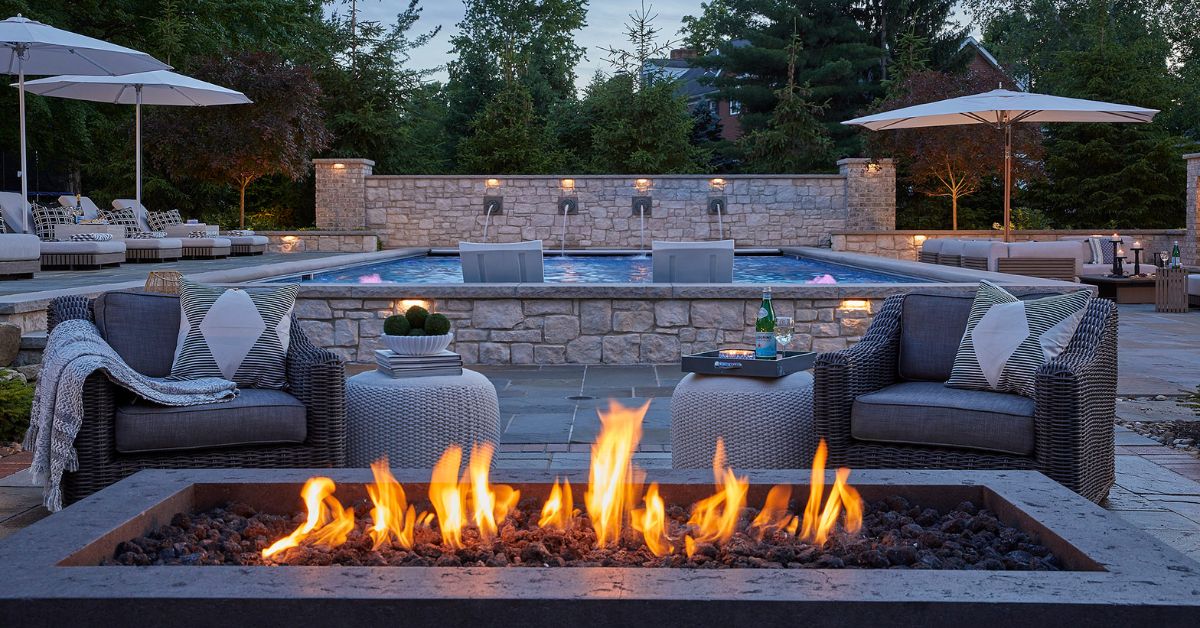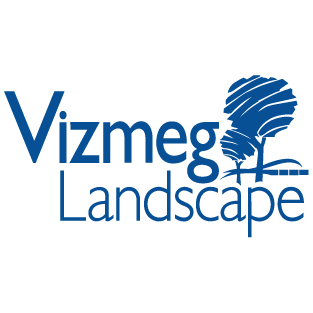Water features add visual interest to any backyard, creating soothing sounds and providing a focal point that draws the eye and calms the mind. Exploring how to incorporate water features into your backyard is the first step toward creating your perfect outdoor sanctuary.
Ahead, discover the many options available to decide which water feature might be perfect for your outdoor space. You’ll also learn points of consideration before you get started so your project is as perfect as you imagined.
The Benefits of Adding Backyard Water Features
Aesthetic Appeal
Water features are stunning centerpieces that elevate your overall backyard landscape design. The reflective surface of the water creates visual depth that makes spaces appear larger. Moving water catches sunlight throughout the day, creating dancing patterns of light that bring your garden to life.
Different water features offer unique visual benefits. To help you envision your dream aesthetic, here are some of the benefits of each type:
- Swimming pools add instant luxury and a resort-like feel to your backyard.
- Fountains draw the eye upward and can incorporate sculptural elements.
- Ponds create tranquility and reflect the sky and surrounding plants.
- Waterfalls add drama and movement that draw attention to specific areas of your yard.
Stress Reduction
Water features mask unwanted sounds from traffic, neighbors, or nearby construction. This natural sound barrier helps you feel more relaxed in your outdoor space. Many homeowners find that their favorite place to unwind after a long day is near a water feature. The combination of visual beauty and soothing sounds creates an ideal environment for meditation, reading, or catching up with loved ones outdoors.
Increased Property Value
Well-designed water features can increase property value depending on the type and quality of installation. Swimming pools usually offer the highest return on investment, while smaller features like fountains and ponds also add value while requiring less maintenance and space.
Attracting Wildlife
Certain water features naturally attract birds, butterflies, and beneficial insects to your garden. The sound of flowing water signals a fresh, clean water source that these creatures find irresistible. Adding plants around your water feature creates additional habitats and food sources for wildlife visitors.

Types of Water Features To Explore
1. Swimming Pools
Consider your lifestyle, available space, and intended use when choosing a swimming pool, bearing in mind that modern pool designs go far beyond basic rectangular shapes. Features like sun shelves, volleyball nets, and basketball hoops add to the enjoyment of a pool.
2. Ponds
Garden ponds can accommodate fish and aquatic plants or house purely decorative elements. Koi ponds encourage regular interactive experiences with colorful, friendly fish. Wildlife ponds attract frogs, dragonflies, and birds while supporting local ecosystems.
3. Fountains
Wall-mounted fountains work well in small yards or courtyards, while freestanding fountains are usually focal points in garden beds or lawn areas. Electric fountains provide consistent water flow and can include lighting features for nighttime enjoyment.
4. Waterfalls
Waterfalls work especially well on sloped properties. Natural stone waterfalls blend seamlessly with existing landscape features, and they can also be added to a swimming pool.
The height and width of your waterfall affect its visual impact and sound levels. Taller waterfalls create more dramatic sounds, while wider falls produce gentler, more subtle noises.
5. Streams
Artificial streams connect different areas of your landscape while creating the illusion of natural water flow. Meandering stream designs create more visual interest than straight channels. Strategically placing rocks and plants along stream banks enhances the natural appearance.
Planning and Designing a Water Feature: What To Consider
Assess Your Space
Our designer will evaluate your available space, including size, slope, sun exposure, and proximity to utilities. We will also consider views from inside your home as well as outdoor living areas. Water features should enhance sight lines from windows and patios where you’ll see them most often.
Choose a Goal for the Space
Our team can help you define your primary objectives before selecting specific water feature types. For example, relaxation goals might favor gentle fountains or naturalistic ponds, while swimming pools or interactive features are best if you want a water feature that entertains.
Multiple goals can be achieved with a single water feature or a combination of different elements. A pond with a small waterfall, for example, provides relaxation benefits while attracting wildlife and creating visual appeal.
Finalize Your Budget
Water feature costs vary dramatically based on size, complexity, and installation requirements. Factor in ongoing costs, including electricity for pumps and lights, water usage, cleaning supplies, and seasonal maintenance.
Plan Safety Measures
Child safety is the most important consideration for a water feature. Your designer can make recommendations based on your specific project and needs.

Water Feature Maintenance and Care Needs
Cleaning
Regular cleaning maintains water quality and prevents algae buildup. Remove accumulated debris and leaves weekly, and clean pump filters monthly or as needed to maintain proper water flow.
In addition, swimming pools need chemical balance testing and adjustment regularly, plus cleaning to remove leaves and debris. Natural ponds benefit from beneficial bacteria additions and aquatic plant management.
Winterizing
Cold-climate water features need proper winterization to prevent freeze damage. Drain shallow features completely, or use heaters to maintain water circulation. Remove and store pumps and delicate components in heated areas.
Fish ponds require special winter care, including adequate depth for fish survival and aeration systems to maintain oxygen levels under ice. Consult local experts for specific winterization recommendations in your climate zone.
Algae Control
Algae control combines prevention and treatment strategies for ponds and waterfalls. Proper filtration, adequate water circulation, and appropriate fish or plant populations help maintain a natural balance.
If you have fish, avoid overfeeding them, and remove excess organic matter that can fuel algae growth. Shade structures or aquatic plants can reduce sunlight that promotes algae development in problem areas.
Create Your Perfect Water Feature
Learning how to incorporate water features into your backyard transforms your outdoor space into a personal oasis. Start with clear goals and realistic budget expectations, then choose features that match your space and lifestyle needs. Professional consultations can help you avoid common mistakes for a successful installation.
If you’re looking for a residential and commercial landscaping company with decades of experience, turn to Vizmeg Landscape. Contact us today to learn how we can help you achieve the backyard of your dreams.





Leave a Reply